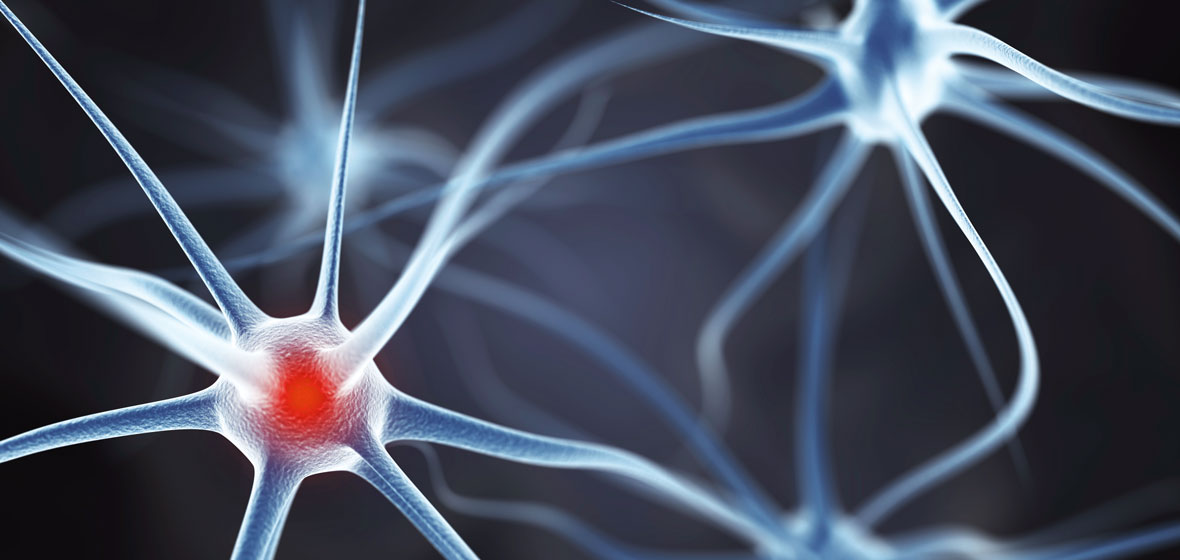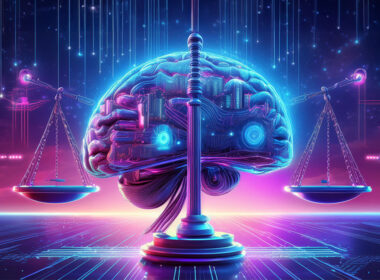“It wasn’t me, it was my brain.” The rate of neuroscientific evidence being mentioned in US court cases doubled between 2005 and 2012. While still in its infancy in Australian courts, it a growing trend.
On 8 December last year, Justice Monika Schmidt of the Supreme Court of New South Wales spoke at the launch of the Australian Neurolaw Database. She was far from a random choice of speaker. Seven months earlier, Justice Schmidt delivered what some pundits described as a landmark decision in the case of Casey v Pel-Air Aviation Pty Ltd. In that judgment, she concluded that the post-traumatic stress disorder that Karen Casey suffered was “not merely the result of an injury to her mind”. “It must be concluded that the PTSD which Ms Casey suffers … is also a bodily injury,” the judge said.
While the case is now on appeal, the May case was the first time anyone in the country had been awarded damages for PTSD based, at least in part, on neuroscientific evidence of structural and irreversible changes in the brain. As Carneys Lawyers partner and aviation specialist John Dawson remarked at the time to The Australian: “It gives a wide meaning to the term ‘bodily injury’ to say a psychological injury such as PTSD is compensable.”
In a sense, Dawson had summed up the very distinction between long-held notions of bodily injury versus emotional injury that scientific advances are now calling into question. It’s why the area of neurolaw is increasingly of interest for both legal practitioners and members of the judiciary.
“What we now know about how brains create what we feel is creating tension in the traditional legal notions of mind/body dualism; that Cartesian dualism,” says Dr Sascha Callaghan, a lawyer and lecturer in health law and ethics at the University of Sydney.
“Neuroscience is clear that the brain is part of the body. While this idea is not yet breaking down those traditional ideas, it’s putting pressure on them. And they’re questions that are coming up again and again and again.”
According to the outline Callaghan has developed for a neurolaw unit of study she is teaching this year, neurolaw is the “intersection between the emerging neurosciences and law, [including] the implications of new brain sciences research for key legal principles”.
While the development of a public database of Australian cases that mention neurolaw in some form might speak to a burgeoning area of law, the database has collated just 87 cases since 1997 where neuroscience or neuroscientific methods have been mentioned. Compared with jurisdictions such as the United States, it’s clear that neurolaw in Australia is still in its infancy.
A recent US study of 1,600 judicial cases by Nita Farahany at Duke University found the prevalence of neuroscientific evidence being mentioned had doubled between 2005 and 2012. In May 2015, the Presidential Commission for the Study of Bioethical Issues also released a 150-page report into “three controversial topics that have captured the public’s attention at the intersection of neuroscience, ethics, and society … [including] neuroscience and the legal system”.
It is a development in the US legal system, however, that has been far from universally lauded.
“Legal scholars, scientists, and commentators lament the onslaught of behavioural genetics and neuroscience in the criminal courtroom,” Farahany writes in the opening paragraph of the 2015 report. “Fueled largely by anecdotal evidence about the use of bioscience in criminal cases, or media reports of high-profile cases, there is a growing belief that neuroscience has become a mainstay of the US criminal justice system.”
While it’s far from a mainstay here, there is a recognition that advances in neuroscience are underscoring older legal arguments.
Allan McCay, a former solicitor and legal researcher affiliated with Macquarie University’s Centre for Agency, Values and Ethics (CAVE) and a lecturer at the University of Sydney Law School, says the use of neuroscience in evidence is almost unremarkable. “People don’t bat an eyelid at an expert witness report that refers to neuropsychological testing or brain scans,” he says. “That’s not a strange intrusion on the legal system.”
Instead, it’s the developments in neuroscience that are becoming the Trojan Horse for reimagining the way courts deal with questions of responsibility.
“Neuroscience is one of the ways the issue of responsibility is brought to court and discussed at the moment,” says McCay. “There’s a tension in seeing people either as agents that are fully responsible for what they do or seeing them as part of the natural world with malfunctioning body parts, which can include the brain.”
Callaghan agrees. “Neuroscience is making the things that we used to feel comfortably happy about saying – ‘You’re responsible, you’re not, you’re injured in the right way, you’re not’ – harder. The rationale for those sorts of presumptions is under pressure because we now have a whole lot of science on those questions.”
At a recent Trends in Sentencing Conference at the Australian National University, Professor Tony Butler from the Justice Health Research Program at UNSW’s Kirby Institute spoke about his research into the prevalence of traumatic brain injury (TBI) in the prisoner population. The study of male inmates in the Hunter region had a high background prevalence (82 per cent) of some sort of TBI of any severity and two- thirds had a TBI with a loss of consciousness.
“Studies such as ours have shown that TBI is highly prevalent in the inmate population and, when you do data linkages, there is an association between exposure to TBI and offending,” says Professor Butler, who collaborated with Associate Professor Peter Schofield, Director of Neuropsychiatry in Hunter New England Health. “People are putting two and two together, deciding that maybe the two are causally linked.”
At the conference, Professor Butler sensed a keen interest from the judiciary. “My impression from the ANU conference was that the judiciary really wants to know to what extent they should be considering things like TBI and other types of neurological issues in their sentencing,” he says. “But I think it’s really in its infancy and it’s very complex and not as simple as some people are saying. The links are very appealing intuitively, but I think it’s more complex than that and we’ve got a long way to go in our precise and exact understanding of the role of these conditions and offending behaviour.”
Australian courts are now dealing with modest changes in evidence, such as brain scans showing plaques, tumours or the side-effects of medication and general research on PTSD. “I don’t think we are seeing massive change in the criminal context because judges are quite familiar with psychiatric evidence and arguments about whether people can help certain behaviour,” says Callaghan. But it’s the increasing use of neuroscientific visual evidence supporting the conjecture of psychiatry that she believes is having a powerful effect.
“I always come back to the idea of seeing is believing,” says Callaghan. “If you’ve got behaviour that indicates someone is damaged and you get this powerful visual evidence that someone has plaques on the brain and that’s why they’re acting that way, it bolsters psychiatric evidence in quite a powerful way.”
This begs the question of the role of the expert witness in the advancement of neuroscientific argument. Amanda White, a forensic psychologist and clinical neuropsychologist with Dr Susan Pulman & Associates, regularly provides expert opinion to the courts and has just completed a PhD looking at neuroscience in reports on fitness to stand trial. She believes that, in general, there is an increased demand for any sort of expert that can speak to brain behaviour relationship and how that might affect legal proceedings.
“I think the idea of neurosciences being new, of people being not quite sure how to use them and hence being very conservative of their use within the legal context, is not necessarily a bad thing,” she says.
“But some of the judges I interviewed seemed to be more receptive to neuropsychological evidence in particular as opposed to psychological evidence in general – and I would tie neuro-imaging in with this – because they said it’s more objective. I think one of the keys about neuroscience is the objective nature of it, whereas traditionally evidence has been a lot more subjective.”
Jeanette Kennett, Professor of Philosophy at Macquarie University and leader of the Neuroethics, Neurolaw and Moral Cognition research cluster of Macquarie University’s CAVE, believes we’re still in the early stages of understanding how influential this type of evidence is in criminal cases.
“In Australia, brain scans have tended to be led in mitigation in sentencing,” she says. “So it’s really only the judge who decides, and perhaps they’re a little more hard-nosed. Judges are also bound by the Sentencing Act to take into account a whole range of other things such as general deterrents, denunciation, just punishment. They’re quite constrained in their deliberation.”
However, Kennett cautions that the law soon may need to grapple with the problems that brain scans could pose for future cases decided by jury. “What we’re not seeing so far in Australia is the use of this evidence at trial,” she says. “But certainly experimental evidence would seem to indicate that people can be a little bit over-impressed by pictures of brains. There have been experiments done where people have been given a poor argument or a really poor argument accompanied by a picture of a brain and they’re much more accepting of the poor argument if it’s accompanied by a picture of a brain.”
And, as White points out, not all brain scans are created equal. “Within the field of neuro-imaging, for certain kinds of neuro-degenerative processes, for example, only specific types of imaging scans might be relevant or pick up those deficits,” she says. “If you just get a CT scan, some of these problems are not going to be evident, so you’re going to say, ‘Oh, the neuroscience proves there is no deficit there’. But it’s not necessarily true, so it’s about also being aware of the different techniques within a neuroscience and using the right one.”
There is also the problem that proffering evidence of brain damage could be a double-edged sword for the defendant.
“If you could trace back some awful behaviour to something in a person’s brain, that might be more worrying because it might indicate that they are intrinsically bad,” Kennett says. “A colleague of ours was interviewing judges and asked about how they would sentence an offender with a genetic predisposition related to anger. The judge said, ‘Am I supposed to lock him up for less time or more time?’”
Neuroscience also has the effect of not only questioning the length of time that people are incarcerated but whether that form of punishment is appropriate. “What does the law do once we show there’s a whole gamut of people who actually have organic impairment versus something we just thought was subjective?” asks White. “Just as we have an ageing general population, you’ve got an ageing forensic population with the potential for patients with a neuro-degenerative process. So all these other questions are going to start to be thrown up and, given what we know from neuroscience, I don’t think we can ignore this form of evidence.”
As the Pel-Air case indicated, some of the biggest developments could arrive in the civil realm, where the distinction between mental and physical injury has long been a critical question. It’s an edifice that neuro-imaging could soon start to wear away.
“There is now, for example, a lot of evidence backed up by brain scans that shows that people with schizophrenia experience something called passivity syndrome, which is essentially equivalent to someone being remote-controlled,” says Callaghan. “The court has previously said that if you’re hypnotised, you’re not acting voluntarily. That’s how vaudeville hypnotism works, but not real hypnotism. The true example of what judges had in mind when they were talking about that is schizophrenia and passivity syndrome.
“So it will be interesting to see how cases such as these develop as neuroscience develops. It’s clear that if you have a broken brain, it changes what you do. And the better science gets – and it is inevitable that it will get better – the more it will come into court.”
Neuroscience also might upset the categorisation of pain and suffering in awarding damages in civil cases. Does it make sense, for example, to call an injury sourced in one organ a different category to an injury sourced in another organ, such as the brain or another body structure? Why is one capped at one amount and the other at another?
“What’s the difference if I’m a paraplegic or if it’s PTSD that makes it impossible for me to leave the house?” asks Callaghan. “It’s not like I’m choosing not to. They’ll say, ‘You can see the scans, I literally cannot move’.” Advances in neurolaw also have the capacity to enhance the ability of organisations such as the RSL to appeal Department of Veterans Affairs entitlement provisions before the Administrative Appeal Tribunal or the Federal Court.
“If we had competing psychiatrists arguing whether PTSD exists or not, being able to produce brain scans to show an injury which is depicting PTSD … This is where neuroscience could help us,” says RSL (NSW) CEO and State Secretary Glenn Kolomeitz.
But with those advances comes a degree of caution. “From an expert perspective,” says Dr White, “it’s about trying to keep up with new developments in neuroscience and also then to look at the legal question we’re being asked, because the science is evolving much more rapidly and the law is being left behind. How do we close that gap? I think that’s really in some ways the role of the expert – to have the knowledge and skill to be able to link the neuroscience to the legal question at hand.
“I think the law also has to set a definitive set of evidentiary standards in order to make sure there’s predictability and standards in the process of evidence admissibility.”
If we’re considering what the future of law is, neuroscience throws up a host of issues. In the end, says Callaghan, neurolaw is all questions and observations.
“I don’t think that, on its own, it’s changed the course of the law, and it’s not realistic to think about it in those sorts of ways,” she says. “But what it does do is slowly seep into the culture – why we do the things we do – then we have a different feeling towards people who do the things they do. With each generation, the things we accept as self-evident change and, from my point of view, it’s slowly changing community attitudes. That’s where you get the impact on the law. Then it’s about future-proofing the law. How do we deal with these issues? How do we educate judges, how do we have to make rules of evidence, and what challenges might we face?”
Three key cases using neuroscience
Karen Casey v Pel-Air Aviation Pty Ltd [2015] NSWSC 566
Karen Casey was one of six people on board a Pel-Air Westwind plane conducting a medical evacuation from Apia to Melbourne on 18 November 2009. Approaching Norfolk Island to refuel, the plane was forced to ditch in the ocean. As a result of being trapped in the plane, Casey developed post-traumatic stress disorder and sued Pel-Air for damages.
The claim was brought under the Montreal Convention to which Australia is a signatory. The claim turned on the meaning of “bodily injury” in Article 17(1) of the Montreal Convention.
Expert witnesses gave evidence, including that “although post-traumatic stress disorder has been considered as a neuropsychiatry disorder, numerous studies and evidence-based research have confirmed that complex traumatic experiences cause chemical changes in the brain, which result in structural changes in brain and toxic changes as evident by neurotransmitter balance changes and physical defects in brain similar to other physical chronic disease and conditions”.
Justice Schmidt found in favour of the plaintiff, saying the injuries did indeed constitute a “bodily injury … not merely the result of an injury to her mind”. The decision is on appeal.
State of Tasmania v Terence Lewis Martin
Terry Martin is a former member of the Legislative Council in Tasmania who was found guilty of sexual intercourse with a girl under 13.
On 21 November 2011, he was convicted of creating child pornography and having sex with a 12-year-old girl but was later given a suspended sentence because he had developed hypersexuality as a result of medication for Parkinson’s Disease, which affects the dopamine system in the brain.
It was clearly shown through neuropsychological evidence that the action of a particular drug on his brain was taken to be the cause of his behaviour, creating a disorder that diminished his capacities.
The People of the State of New York v Herbert Weinstein (1992)
Often cited as one of the first and most prominent cases to use the emerging form of brain-scanning technology (in this case, Positron Emission Tomography (PET)), Herbert Weinstein, a 65-year-old advertising executive, was accused of strangling his wife and attempting to make her death look like suicide by throwing her body out of the window of their 12th-floor apartment in Manhattan.
Weinstein’s lawyer used the PET scan to show that his client had an arachnoid cyst. The judge ruled that while he could tell the jury that the cyst existed, the lawyer was not able to suggest there was a link between the cyst and evidence of violence. Fearing the brain scans would nonetheless sway the jury to find that the cyst would cause a serious defect in rationality, thus weakening the case for criminal responsibility, the prosecution took an early plea bargain, and he was found guilty of the lesser charge of manslaughter.
Australian neurolaw database
The Australian Neurolaw Database was launched in December 2015 and is a publically accessible database. It began in 2011 as part of a PhD project by Nicole Vincent, who is now Associate Professor of Philosophy, Law, and Neuroscience at Georgia State University in the US city of Atlanta.
Vincent was looking at the capacitarian foundations of the law – the idea that responsibility is founded on certain sorts of capacities – and whether neuroscience would undermine those presuppositions of the law.
It is an effort to chronicle what is happening at the legal coalface so that, as Macquarie University Professor of Philosophy Jeanette Kennett explains, “if you think that neuroscience will change the law then you’d better look at what is actually happening”.
“People within the law can access it, barristers, solicitors, judges, all sorts of people,” she says. “You can search the cases using key words and so forth. We hope it will be a tool for comparison with overseas jurisdictions, but also a useful research tool for academics and hopefully a useful tool for people on the ground.”




